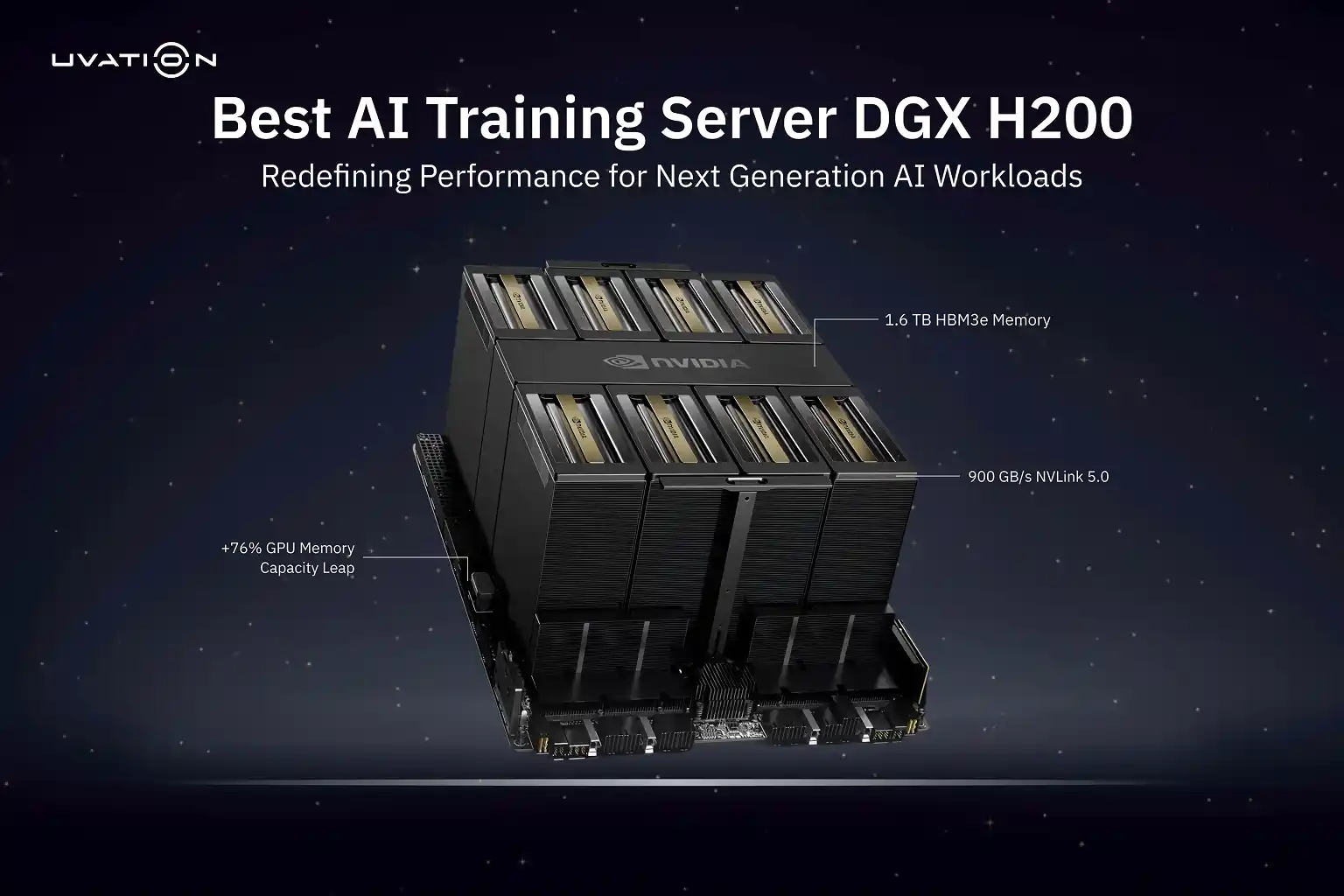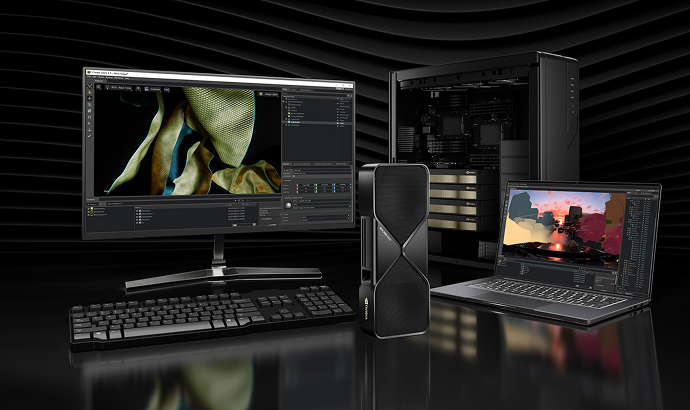

Writing About AI
Uvation
Reen Singh is an engineer and a technologist with a diverse background spanning software, hardware, aerospace, defense, and cybersecurity. As CTO at Uvation, he leverages his extensive experience to lead the company’s technological innovation and development.

The NVIDIA DGX H200 is specifically designed to function as the central computing platform for AI factories and advanced data centers, excelling in enterprise-scale AI training and large language model workloads. It is widely recognized as the best AI training server for large-scale enterprise workloads because it delivers extraordinary computational power, memory bandwidth, and data throughput necessary for training models that span billions or even trillions of parameters. The system provides high throughput, memory efficiency, and compute density within a unified architecture that is engineered to reduce latency, maintain consistent performance across intensive workloads, and handle massive data movement.
The DGX H200 is built on the NVIDIA Hopper Architecture and is powered by eight NVIDIA H200 Tensor Core GPUs. A crucial feature is the inclusion of HBM3e memory technology, providing up to 1.6 TB of HBM3e memory across the system, which is approximately 1.4 times greater capacity and 1.8 times higher bandwidth than H100 GPUs. Additionally, the system leverages NVLink 5.0 and NVSwitch Integration, which provides 900 GB/s of GPU-to-GPU bandwidth. Complementing the GPUs are dual 5th Gen Intel Xeon CPUs, which ensure a balanced throughput between computation and data transfer layers for tasks such as AI training, inference, and data preprocessing.
The DGX H200 represents a measurable generational performance jump in system performance, memory capacity, and efficiency compared to the DGX H100, even though both servers are based on the Hopper architecture. The most notable advancement is the shift to HBM3e memory: each H200 GPU offers 141 GB of high-bandwidth memory, compared to 80 GB in the H100. This results in a 76% increase in GPU memory capacity and a 43% rise in memory bandwidth, reaching 4.8 TB/s across the system (up from 3.35 TB/s in the H100). Furthermore, the DGX H200 offers 1.6 TB of total system memory, a 150% increase from the 640 GB available in the DGX H100, providing greater headroom for complex AI pipelines and concurrent task execution.
NVLink 5.0 and NVSwitch integration are defining strengths of the DGX H200, crucial for maintaining performance consistency as model complexity grows. NVLink enables direct, high-speed communication between GPUs. When combined with NVSwitch, the system creates a unified 1.1 TB/s memory pool across all eight GPUs. This architecture ensures that data moves quickly and seamlessly across the GPUs without bottlenecks or latency spikes, allowing models to operate as if trained on a single large GPU. This improved multi-GPU communication efficiency is critical for workloads that require synchronized computation across multiple processors, supporting model parallelism where large AI models are divided across GPUs for faster training.
The DGX H200 is built to handle the most demanding workloads in artificial intelligence and high-performance computing, extending its use beyond research labs into enterprises across various industries.
Enterprises increasingly adopt the DGX H200 as the foundation for “AI factories” that manage the full lifecycle of AI workloads.
We are writing frequenly. Don’t miss that.
